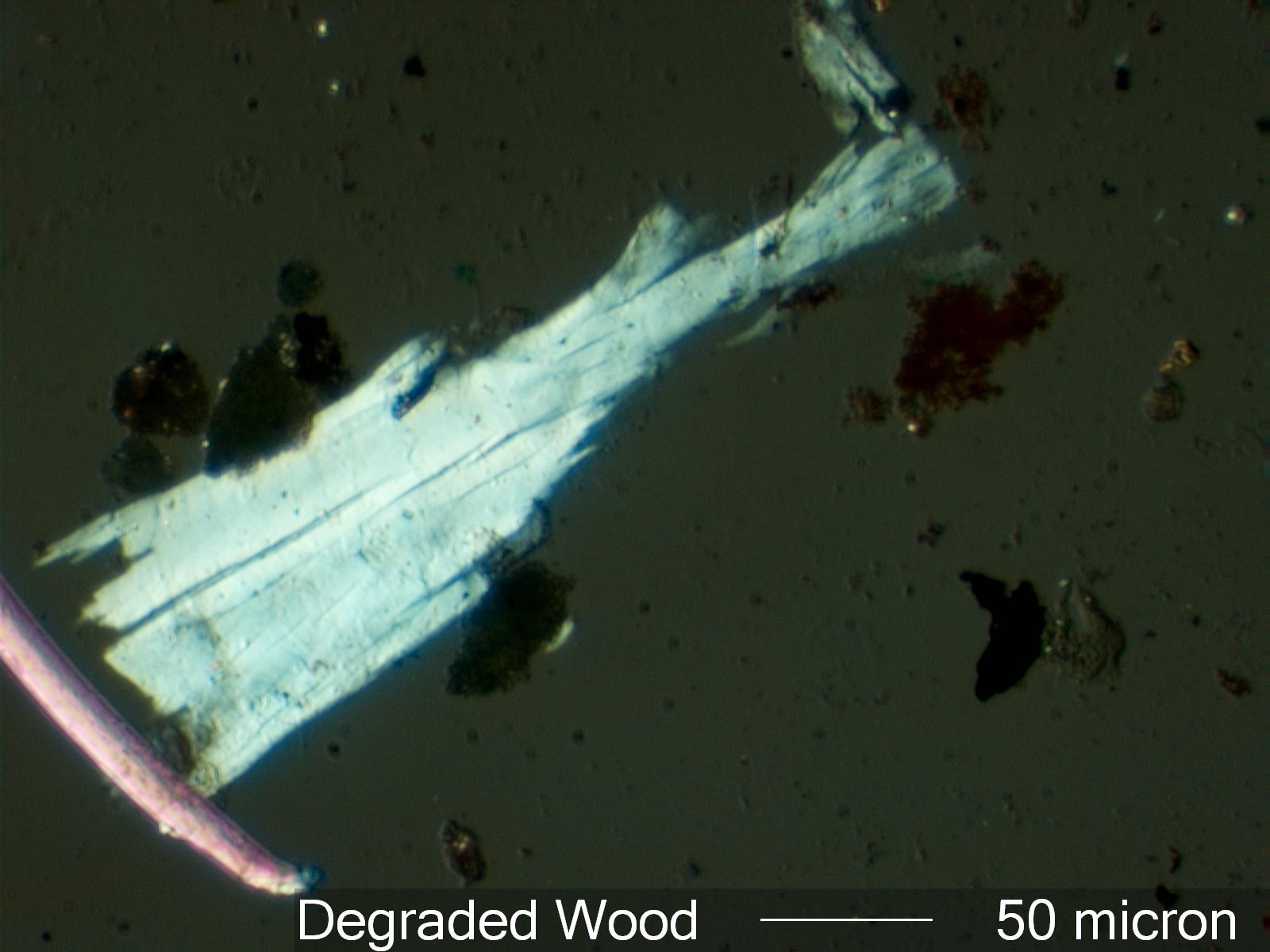Degraded Wood From a Transformer Oil Sample
This is an example of a wood fragment that has undergone
hydrothermal degradation in a transformer
environment. The average polymer length, DP, is reduced with a resultant loss of
birefringence and a reduction in the refractive
index along the length.
Transmitted Circular Polarized Light Illumination
Definition/Function:
Wood is used as spacer material and blocking material in some transformers. This
material will degrade like other cellulose
materials in a transformer over time.
Significance in the Environment:
This type of degradation indicates temperatures typically over 90 degrees Celsius and
elevated moisture content.
Characteristic Features:
Hydrothermally degraded wood often exhibits tears normal to the long axis of the fiber.
The birefringence is
typically below 0.01 by the time these tears are evident. The wood fragment may be quite
irregular in shape, having lost
mechanical integrity in all layers of the fiber. Sawdust from construction or assembly
typically settles to the bottom of
the tank and becomes incrusted with iron oxides over time. Its appearance is quite
different than the wood fragments
generated as a result of aging in the transformer.
Associated Particles:
References:


